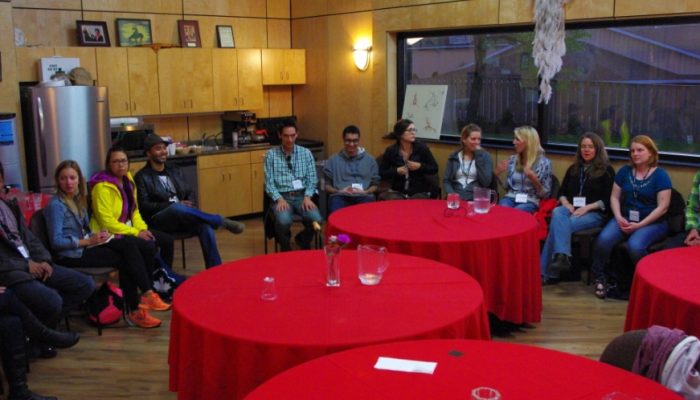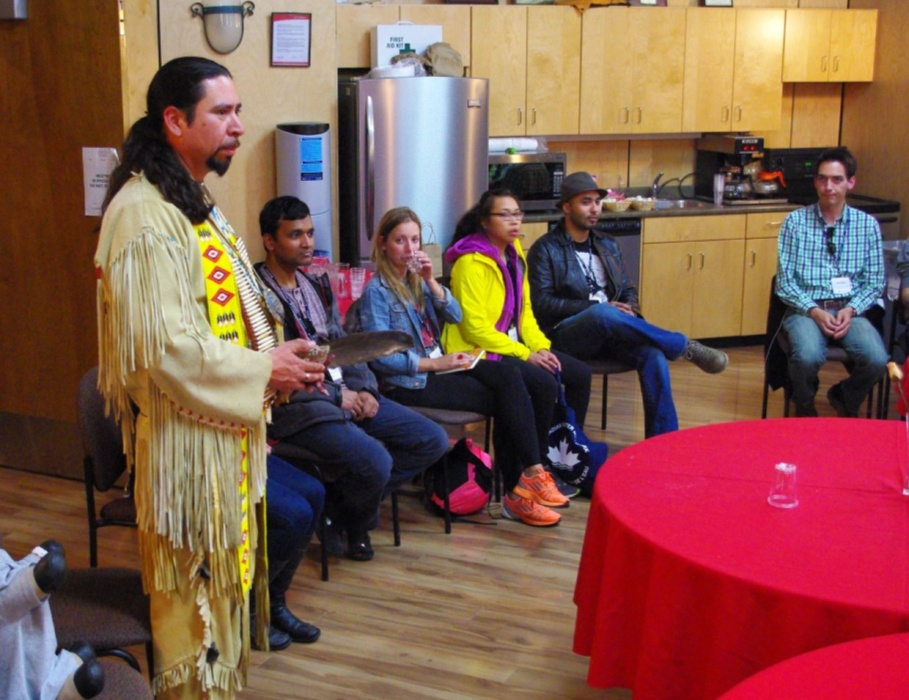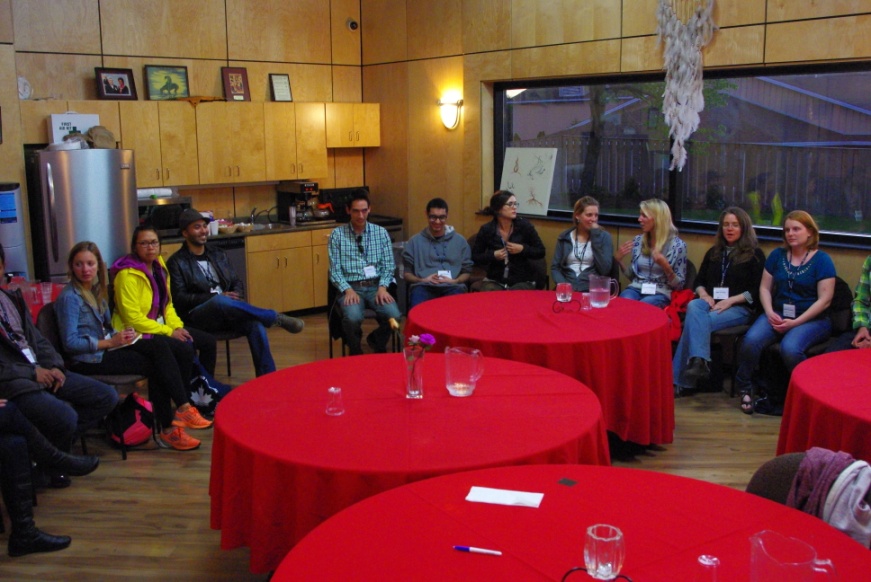
[part two of a special six-part blog series by Mark Ranjram, MEng student at McGill University. From June 8 to June 13 2014, Mark had the privilege of being a part of the Canadian Water Network’s (CWN) Student and Young Professionals (SYP) Workshop in Cape Breton Island, Nova Scotia. Here is the prologue to this series.]
When I first decided to attend this workshop, I made a commitment to myself that I would jump into it head first, and if the pool was shallow, well, at least I tried, and if the pool was deep, what a special experience it could be. Lucky for me, every single person at the workshop was ready to take a swim! Nothing better illustrates how committed everyone was to make something special than our first night together at the Membertou Heritage Centre in Sydney.
The Membertou First Nation is one of five Mi’kmaq groups in the tribal district of Unama’ki (Cape Breton Island). I won’t go into much detail here, but Membertou has an amazing success story (I encourage you to learn more about the community here). After an engaging few hours discussing the culture and history of the Mi’kmaq Nation and the Gaelic immigrants that settled the Island in Canada’s early colonial history, we organized our group into a large circle and were guided through a talking circle. A talking circle is a foundational communication ritual in Mi’kmaq culture in which a symbolic item is passed within the group, with the person holding the symbol (in our case, an eagle feather – an item of great significance in the culture) having sole authority to speak. Our guide, Jeff Ward, dressed in full regalia and lighting sage, led us through four rounds of the circle, with each round having a different theme connected to the four cardinal directions. Immediately after the first few people had spoken, it became clear that there was something special happening. The circle was at times serious, sombre, amusing, and painful, but underlying it all it was incredibly sincere.
A major theme in the circle was having hope when everything is hopeless, and the importance of reconnecting with the idealism and optimism that we all had before the pressures of the real world converted that idealism into cynicism. A major talking point was how difficult it is to stay inspired at work or with research, because of creative limits, financial limits, or just the daily grind of professional life, and how incredibly isolating it can be to be stuck without inspiration. The irony we all came to realize of course is that we had a community in that circle of people who felt isolated in the same way. And suddenly, a group of twenty-five strangers decided that we could be each other’s positive framework, that we could fight against cynicism to give us the chance to be idealistic once again. Whether it was the talking circle, or the strange consequence of being in a completely new place with completely new people, we decided in that moment to be vulnerable, open, and honest, and now, more than a week later, I can say that I consider each and every one of those people a friend who I will fight for to make sure they make their mark on the world. And after just five days with them, I am certain that they have the drive and talent to do just that! The energy in that circle when we realized we could be each other’s motivation was powerful, and when we as up and coming water researchers and professionals no longer have to worry about being bogged down by regressive thinking, the energy we have to help develop solutions is limitless. And if you are a young water professional or researcher, know that this is not an exclusive community! If you want to make a positive change, we want you with us. If you feel defeated and cynical, we want you with us. What a movement this could be!



Pingback: The home of our hearts, Cape Breton – A transformative professional experience with the Canadian Water Network (Part 1 of 6: prologue) | Water Underground